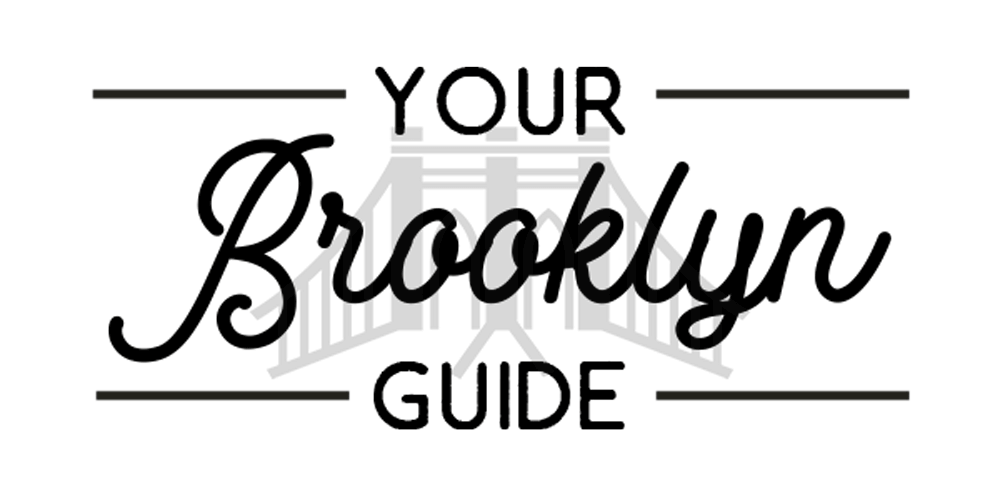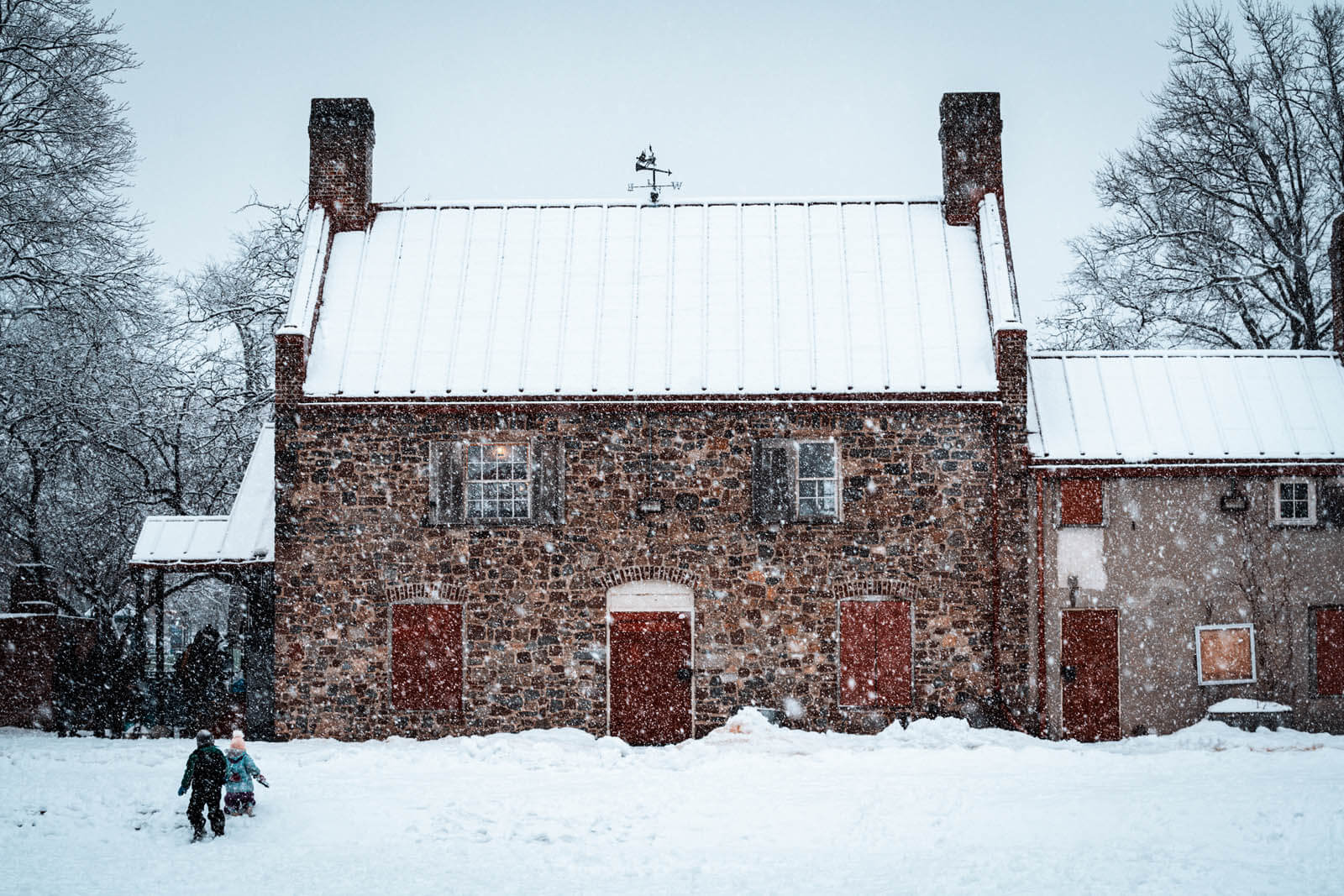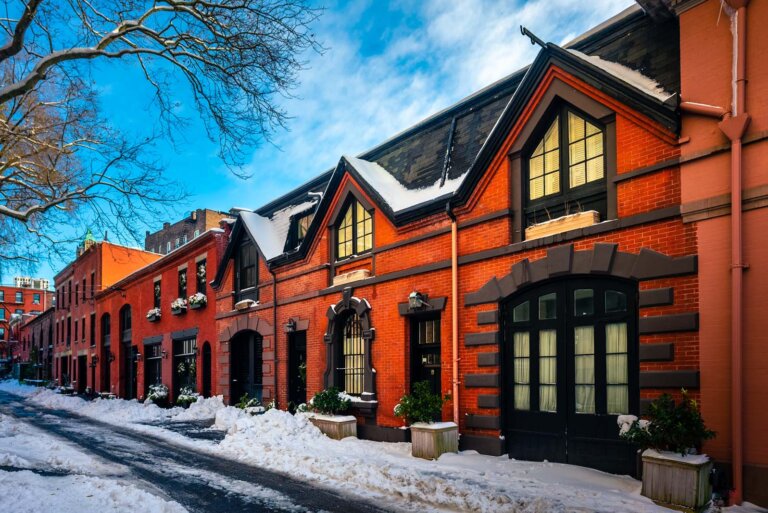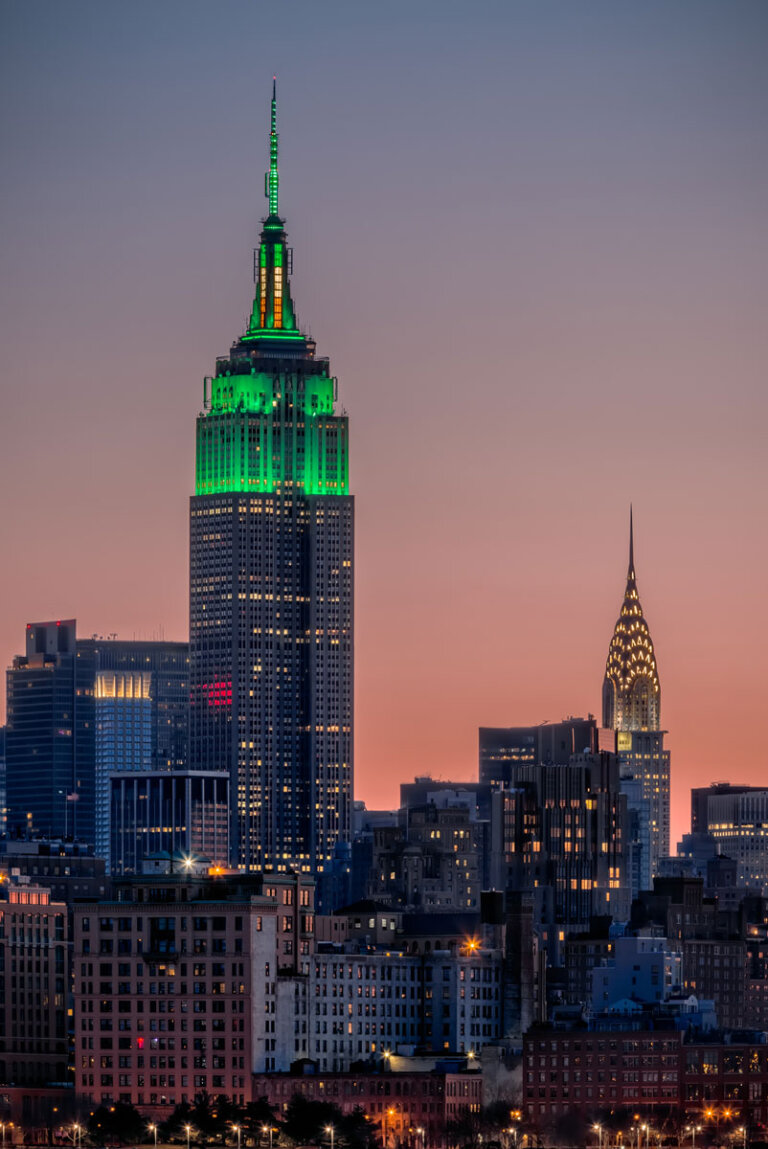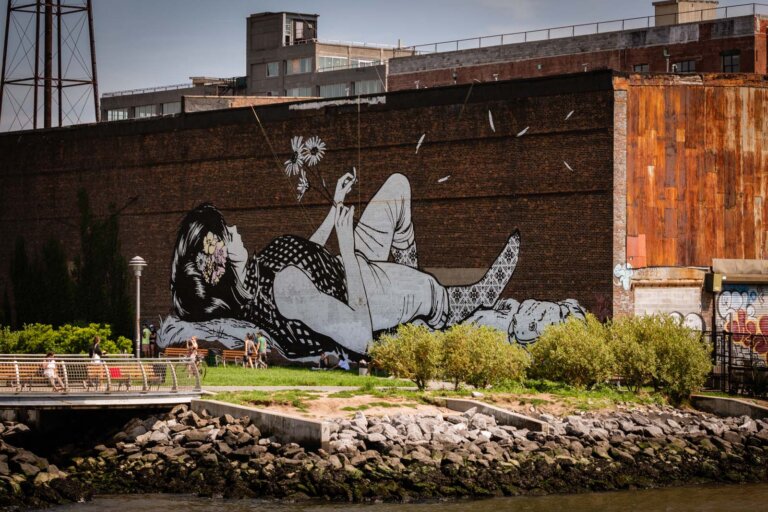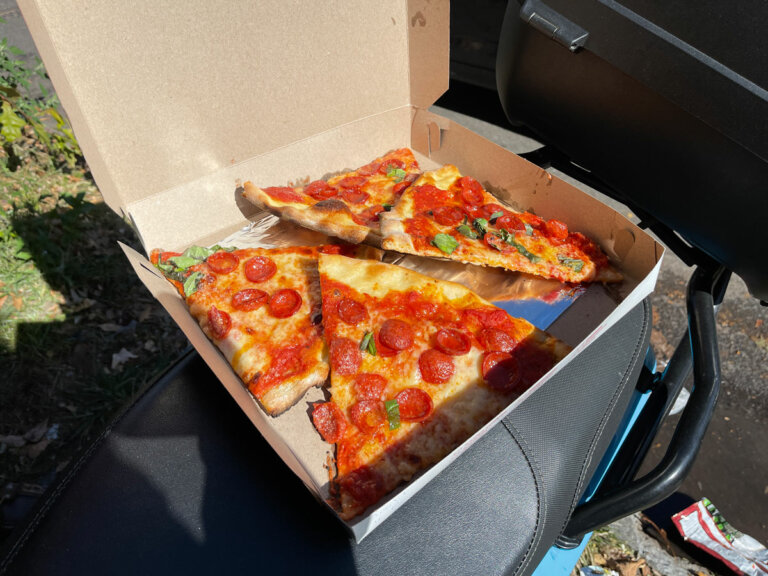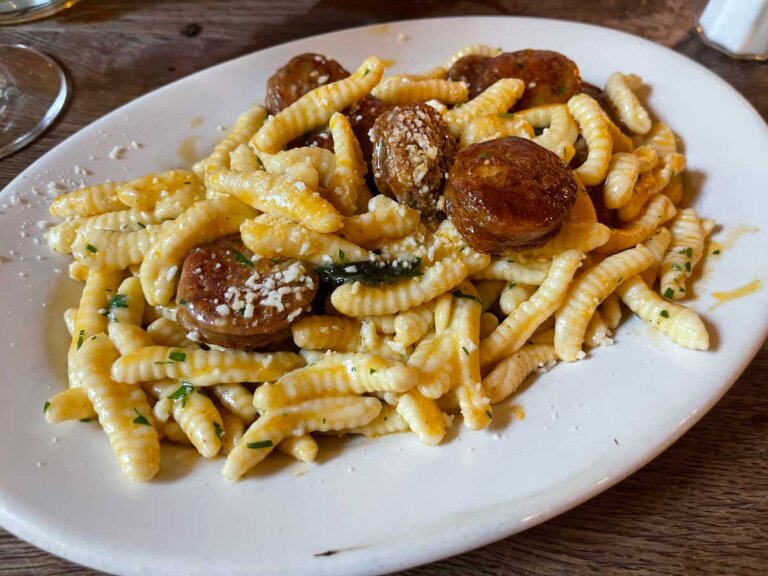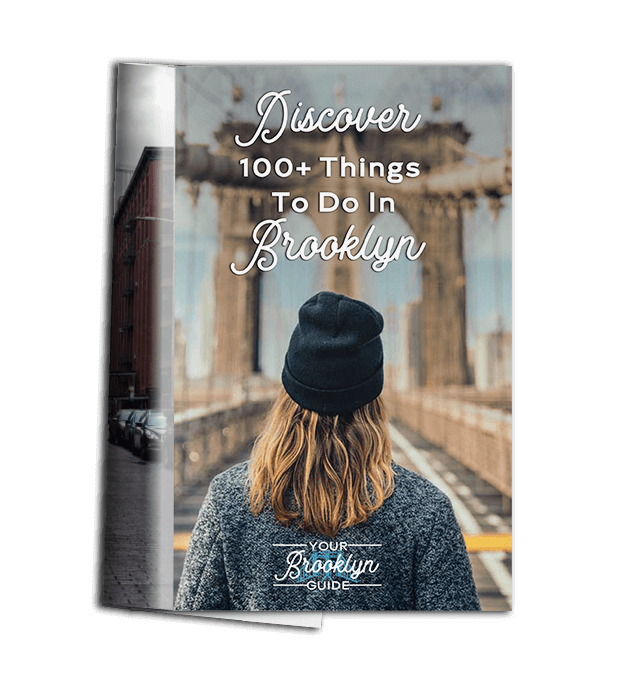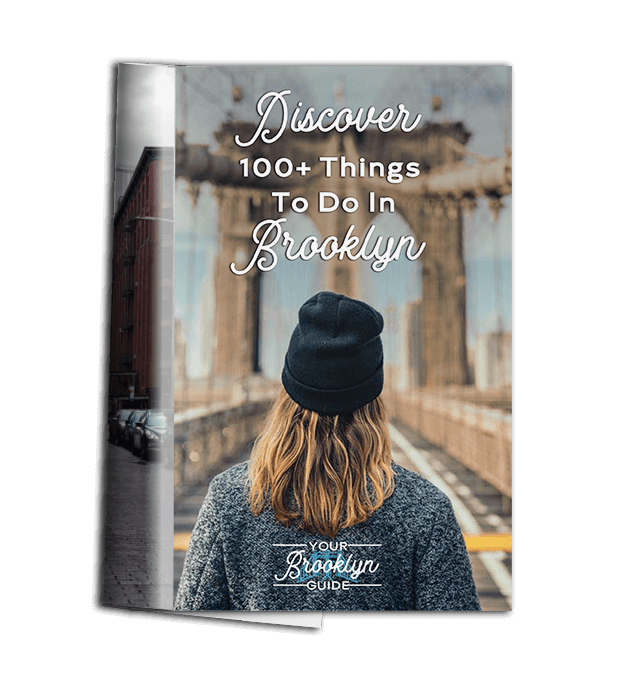25+ Local’s Hidden Gems in NYC (& Unique Things to do in NYC)
There are so many incredible hidden gems in NYC and unique things to do in NYC to explore beyond the typical visitor hotspots like the Empire State Building, Statue of Liberty, Times Square, and Central Park – although all of those are special in their own way and we still love them!
New York is the city that keeps on giving, to locals and visitors alike. However, as the ever-polished oxford shoes of businessmen hit the pavement, the worn bike tires of delivery people impossibly weave in and out of traffic, and the artist’s shoes you’ve definitely never heard of tiptoe gingerly around the puddle that never seems to evaporate, often the offerings of this generous city go unnoticed, as the gazes of these individuals rarely shift from the ground beneath their feet.
Tucked away within the gridded street system of Manhattan and the rest of NYC are secret spots and hidden gems a-plenty to explore, whether you are visiting or local and just looking for some fun, unique things to do in NYC.
This guide will take you off the grid, and highlight some of the best, historically rich hidden gems in NYC to explore as well as other cool unique things to do in NYC. Some of these are activities you can enjoy and some of the best hidden gems in NYC are more about the story, so you can appreciate them when you come across them on your NYC visit!
About the Author
Eli Kimbell is a born and raised New Yorker from Greenwich Village. He is currently pursuing a master’s degree in liberal arts at the University of Richmond.
Unique Things to do in NYC
Catacombs at Basilica of Old St. Patrick’s Cathedral
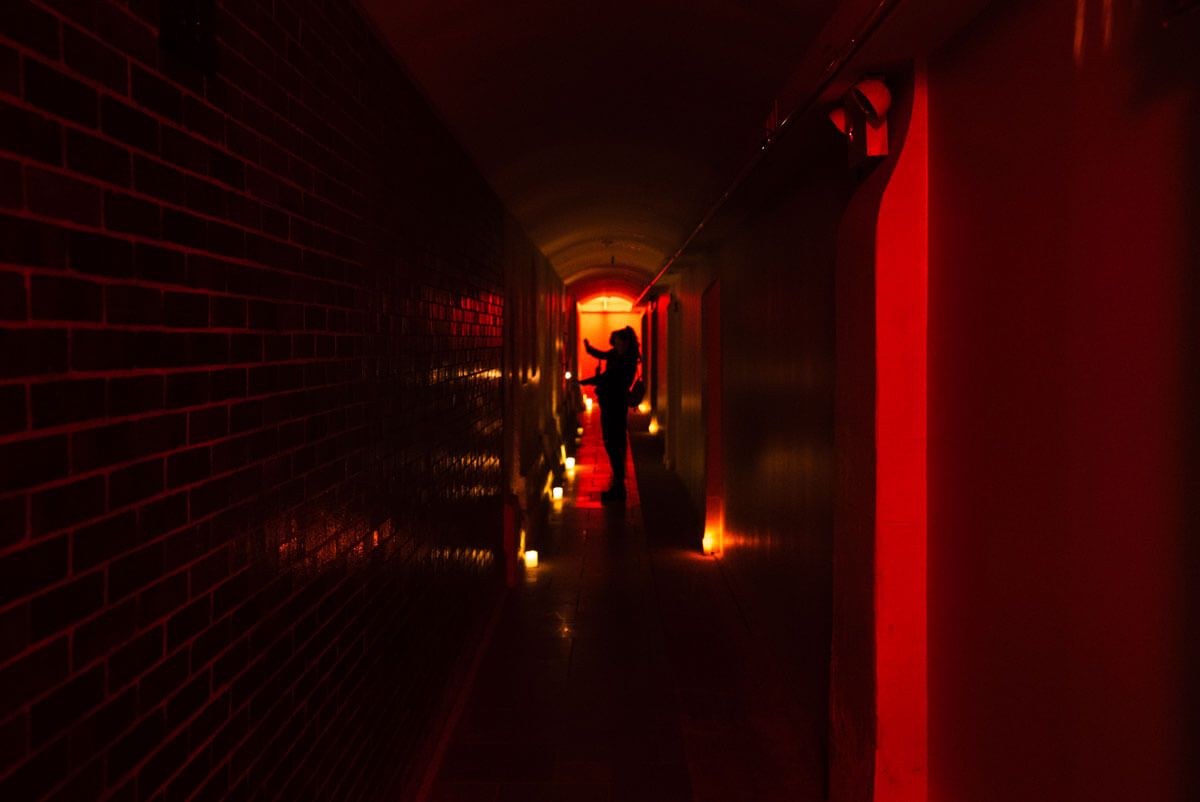
One of the most unique things to do in NYC (and hidden gems) is visiting the catacombs of the Basilica of Old St. Patrick’s Cathedral in Nolita. This is actually the oldest St. Patrick’s Cathedral in the city and is the official held seat of the Roman Catholic Archdiocese of New York until the other. Yep, that’s right the more famous St. Patrick’s Cathedral on 5th Avenue opened in 1879 (64 years after Old St. Patrick’s was built).
This cathedral is now a designated New York City Landmark and now offers one of the most intriguing and interesting tours in New York City! Not to mention, the interior of the Basilica was also used in Martin Scorsese’s film The Godfather, the famous baptism scene.
The Catacombs by Candlelight tour takes you through a 90-minute guided journey through the catacombs, the organ, and the cemetery – all of which are off-limits to the public. Along the journey, you’ll learn about the Gangs of New York (another Scorsese film based on true events) and other secrets of NYC! Then at the very end of your tour, you will get a candle to explore th catacombs of the prominent Catholic families of NYC including the Delmonico’s of the famous steakhouse! Book your Catacombs by Candlelight tour here.
Green-Wood Cemetery
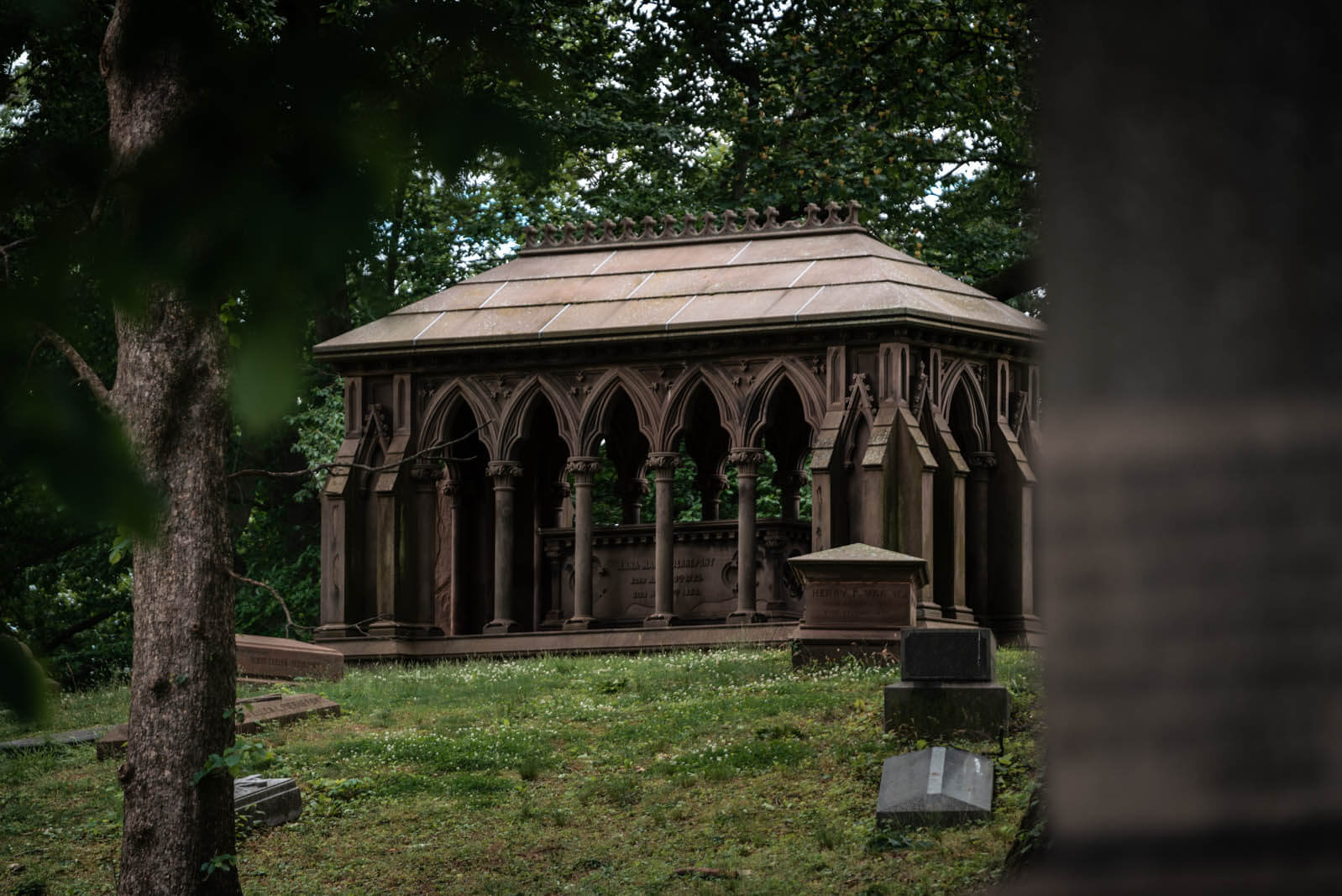
Speaking of catacombs, another one of the most unique things to do in NYC is make a visit to the most beautiful cemetery in the city (and one of the most beautiful in the country) at Green-Wood Cemetery.
Besides being the final resting place of famous folks like REAL Bill the Butcher from Gang’s of New York (that’s a whole story in itself), artist Jean Michel Basquiat, and historic figures in New York’s history to name a few. There are catacombs (which you can only explore by joining one of their periodical tours from the official Green-Wood Cemetery), trolley tours, and other special events like outdoor movie screenings in the summer with Rooftop Films.
The cemetery is 478 acres of winding pathways offering views of the Statue of Liberty, the World Trade Center, and beautiful trees throughout the park. As a matter of fact, Green-Wood Cemetery was used as a park in the early 1900s which in turn led to the need to build Central Park and Prospect Park. That’s right, in the Victorian era, people used this cemetery as a park!
Honestly, this is one of the most beautiful and tranquil places in the city, which is why it’s one of the best hidden gems in NYC. You have to make a visit for yourself, and see all the best things to see in Green-Wood Cemetery.
Gold Vault in the Federal Reserve Bank of New York
View this post on Instagram
As far as hidden gems in NYC go, the gold vault of the Federal Reserve Bank of New York fits the description quite literally. 80 feet below street level and 50 feet below sea level of this Financial District landmark lies the largest known depository of monetary gold on earth.
Opened in 1924, the vault provides gold custody services to governments and central banks around the world. The basement-level vault is protected by extensive security measures akin to something out of a Mission Impossible movie, including motion sensors, 24-hour camera surveillance, and a 90-ton, airtight and watertight steel cylinder at the only entrance point of the vault.
While the contents of the vault possess extraordinary value, tours of the building, including the vault, are available on weekdays and free to the general public with a scheduled visit which you can do online.
The MET Roof Garden Bar
View this post on Instagram
One of the best hidden gems in NYC is at one of the most iconic NYC museums! That’s right, the MET or Metropolitan Museum of Art offers one of the most unique things to do in NYC on its rooftop!
The MET rooftop, The Cantor Roof Garden Bar offers stunning views of Central Park from above. The rooftop doesn’t stay open too late so this is a better afternoon activity unless you’re visiting on the weekend in which they don’t close until 8 PM.
And besides the stunning view with cocktails and light bites, there’s always a sculpture on the rooftop too meaning you still get to enjoy some art even from up here! The sculpture changes throughout the years, so each visit can be different.
1951 Trolley in Red Hook
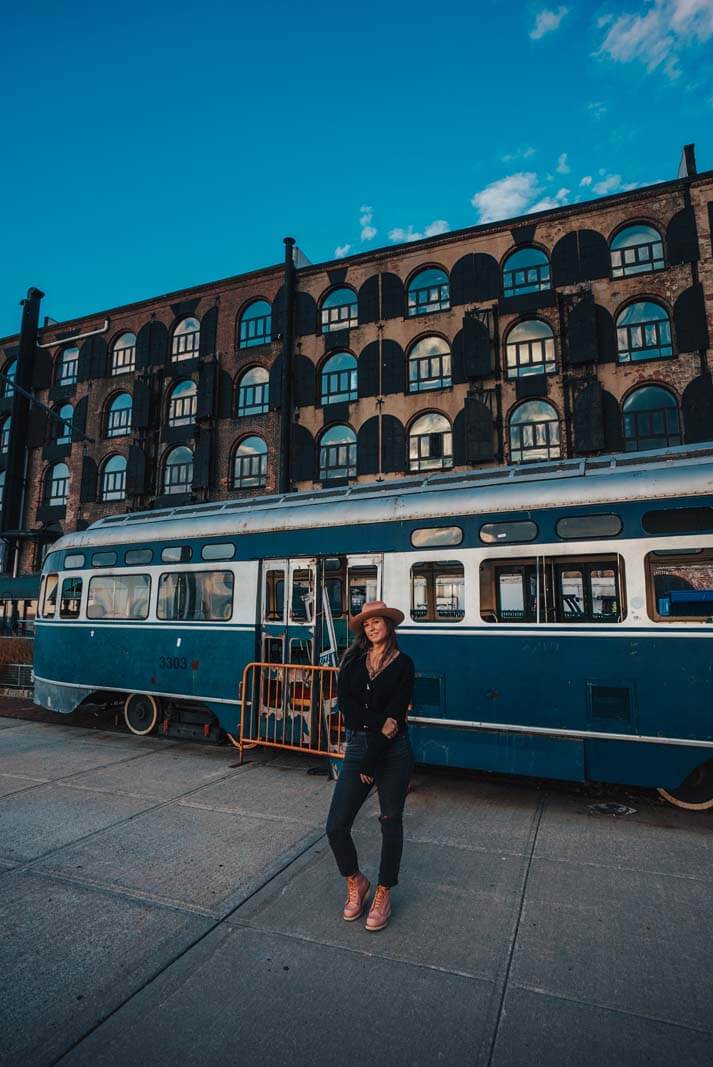
One of the best hidden gems and secret spots in NYC can be found in the waterfront neighborhood of Red Hook in Brooklyn. This hidden gem in NYC is an abandoned street trolley from 1951 tucked away between the waterfront of the New York Harbor with great views of the Statue of Liberty and an old industrial warehouse that this neighborhood is well known for from its industrious past.
This is the last remaining trolley from the ambitious project to bring trolley car transportation to Red Hook and attempt to popularize the ‘trolley lines’ in Brooklyn as a mode of public transport that would run from Red Hook to Downtown Brooklyn.
There was a brief moment in time in the 1990s and early 2000s where there was a collection of old trolleys from around the country and an operating 1-mile trolley loop in Red Hook that ended up being decommissioned and repaved over in 2004.
There were a total of four trolleys like this on the Red Hook waterfront until Hurricane Sandy damaged this area severely and now there is only one which you can visit for free!
This is also a great spot to be at towards sundown as the waterfront is one of the best Brooklyn sunset spots! Also, see more hidden gems in Red Hook while you’re here!
While you’re here don’t miss grabbing a swizzle from award-winning Steve’s Authentic Key Lime Pie and taking in the views of Lady Liberty from Louis Valentino Jr. Park and Pier.
Sylvan Terrace
Between 160th and 162nd streets, bordered by St Nicholas Avenue and Jumel Terrace, Sylvan Terrace stands as one of the only remaining remnants of old New York in Washington Heights (which at the time of Sylvan Terrace’s construction was a suburb of NYC).
Originally erected in 1882, the preserved lane of 20 wooden rowhouses once housed middle class occupants on the former estate of Madame Jumel, a wealthy New York socialite who bore witness to events such as the first assembly of Congress in Philadelphia and Washington’s inauguration at Federal Hall, and who was known to have had an affair with Patrick Henry and was married to Aaron Burr (for Hamilton fanatics, this is a must-see!).
Today, the tiny lane of houses has been preserved as a historic district, and the Jumel Mansion to the east is a city-owned museum.
Picasso’s “Bust of Sylvette” at Silver Towers
View this post on Instagram
Any Picasso fans out there? One of the best hidden gems in NYC is this Picasso sculpture which can be found smack dab in the center of an apartment complex and seen from the street!
The Silver Towers high-rise building complex sits smack-dab in the middle of Greenwich Village—and smack-dab (actually a bit off-center) in the grassy centerpiece of its square-shaped, brick-laden driveway stands the 36-foot-tall “Bust of Sylvette”, created in 1968 and is one of the best not so secret, secret spots in NYC.
This hidden gem in NYC is an enlargement of an earlier folded sheet metal sculpture Picasso had created, and he worked hand-in-hand with artist Carl Nesjar and architect I.M. Pei (who designed the Silver Towers complex) to produce the sculpture seen there today.
“Sylvette” is one of only two public outdoor Picasso sculptures in the Western Hemisphere, so if you’re jonesing for some Picasso without the hoopla of museum crowds, this is one of the most secret spots in NYC to appreciate some lesser-known art by perhaps the most well-known artist of the 20th century.
Weehawken Street
View this post on Instagram
Another secret spot in NYC is Weehawken Street, a tiny, one-block-long street that runs parallel to the west side highway in the West Village.
This hidden gem in NYC tells a story of its own about the historical evolution of New York. It was once a part of the second director general of New Amsterdam’s personal tobacco plantation in the 1600s, and subsequently was enveloped into New York state’s first prison, Newgate State Prison.
After the prison was closed in 1826, the city reserved Weehawken Street (which was named for the New Jersey town across the Hudson with ferry access to the West Village) as the future location for a food market. The market was closed by 1844, and the lots were sold off to residents, including Cornelius Van Schaak Roosevelt, the father of Theodore Roosevelt.
While the Newgate Prison was one of the earliest tourist attractions in the West Village, today Weehawken Street sits silently in the shadow of the West Side Highway, a hidden gem in NYC in the rough.
Northern Dispensary
View this post on Instagram
It is not very difficult to find the Northern Dispensary building, located in Greenwich Village a stone’s throw away from the Stonewall Inn on Christopher Street—it occupies its own triangular block, amidst the surrounding slender brick buildings that seem to shoulder together to catch a better glimpse, and a better understanding, of this stoic outcast.
The secret lies not in the façade of the building, but in the condition of its interior. Its lack of an occupant for almost three decades has given it a mysterious, and dare I say cursed aura that makes it one of the most secret spots in NYC.
Built in 1831, the building was once used as a medical facility to treat the poor and infirm, and eventually became a dental clinic in the 1980s before shuttering its doors after a lawsuit regarding the clinic’s refusal to treat a patient with AIDS ran it out of business.
It was then bought by the Catholic Church, and finally sold to a real estate firm which has not housed an occupant since its purchase in 1998.
Currently, this building is permanently closed so while you may not be able to get inside the building, looking at it from its northernmost corner will grant you the esteemed opportunity to stand at the intersection of Waverly Place and Waverly Place, a New York phenomenon that makes it one of the most unique things to do in NYC.
C Rock
View this post on Instagram
One of the few hidden gems in NYC featured on this list that isn’t in Manhattan is C Rock. This secret spot in NYC is not for the faint of heart, and absolutely should NOT be visited without the guidance and careful supervision of an experienced Bronx-born teenage boy (or ex-Bronx-born teenage boy).
Known for being the host of summertime teenage bravado, this set of ledges along the southern tip of the Bronx closest to Manhattan has existed for generations as the sacred ground of the Bronx rite of passage of jumping off the cliffs into the Harlem River, at the point known as Spuyten Duyvil—which translates to “Spinning Devil”—aptly named by the Dutch for the river’s wicked currents in this area.
The ledges range from about 30 feet above the river to somewhere close to 100 feet, each with its own traditionally passed-down name, some of which are explicit. Since the perilous journey to the ledge across the double blind curve of the metro-north train tracks constitutes trespassing, perhaps the best vantage point to view the action is from the other side of the river, at the Columbia University athletics complex at the northern tip of Manhattan.
From there, one can see the giant powder blue Columbia “C” painted on the face of the cliff, which is maintained by the Columbia crew team.
Disclaimer: Do not attempt to do this incredibly dangerous stunt. Not only do people drown in these wicked currents in the water here but there are accounts of people losing their lives by electrocution when getting to the C Rock. This is dangerous and we only share this hidden gem in NYC to share the story, not encourage any dangerous behavior.
To learn more about this spot, check out this 28 minute documentary about the C Rock.
McNulty’s Tea & Coffee Co.
View this post on Instagram
McNulty’s has been a mainstay of the West Village since it opened in 1895, and has remained in business throughout the whirlwind of changes the city has endured since that time. It might even be accurate to call it the beating heart of what New York, and the Village, is all about–a mom and pop purveyor of caffeine to local residents and visitors alike who have heard of its energized staying ability and genuinely rustic atmosphere for generations.
According to one of its owners, David Wong, the store was originally opened by two Irish brothers, one of whom was a judge, before transferring hands to David and his father, Wing, in 1980.
Some of the jars, scales, and tins present in the aromatic village establishment have been in use since the beginning, and each purchase is marked with a McNulty’s rubber stamp.
Grabbing a bag of coffee or tea here is one of the most unique things to do in NYC, especially if your Starbucks or Dunkin’ routine has become tiresome and repetitive. Who knows–you may come across some rare blend from a faraway place on your visit here, and find your very own hidden gem in NYC that no one but Mr. Wong or his father could have told you about!
Old Stone House
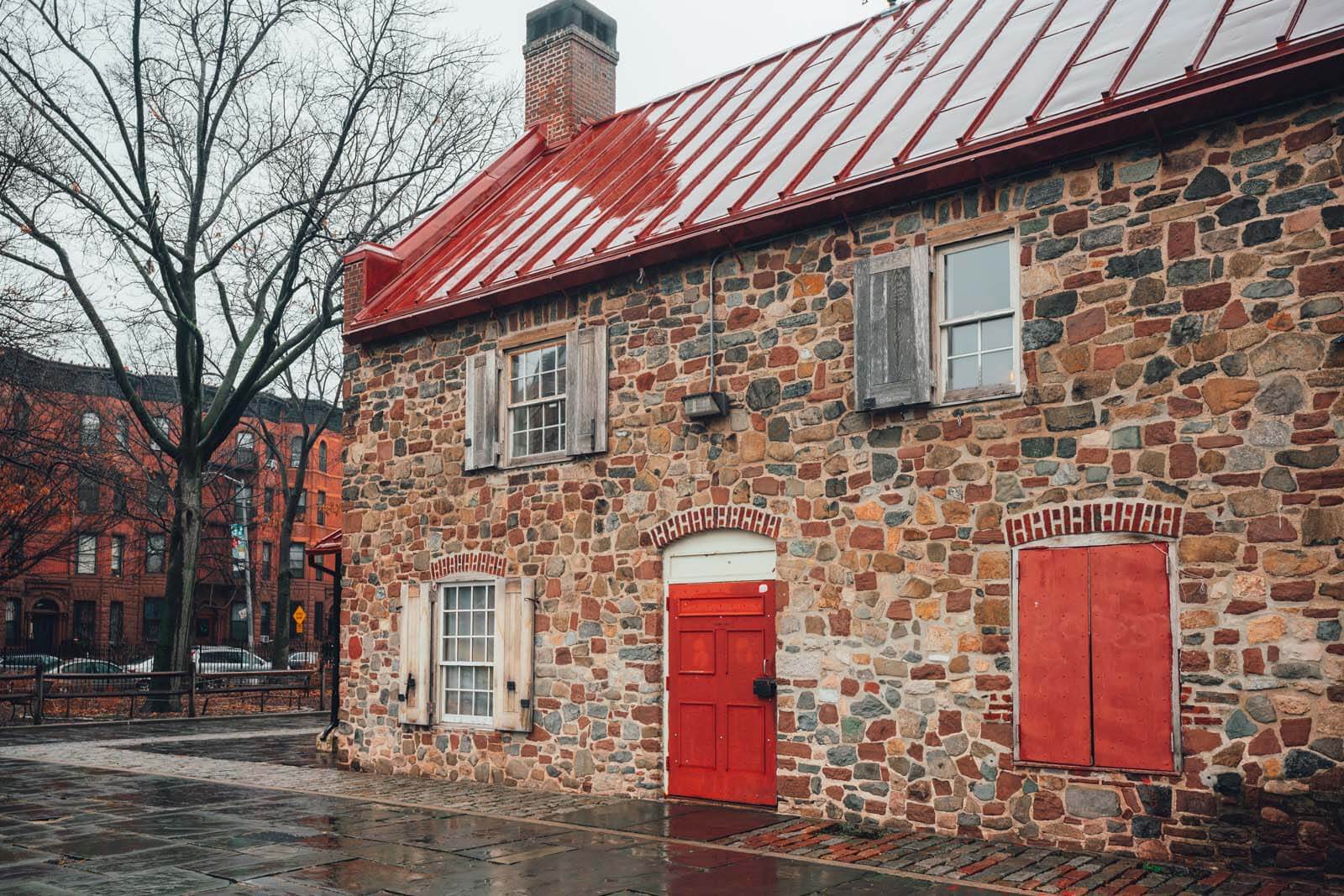 One hidden gem in NYC is the historic landmark and home that dates back to the Dutch colonization days in the 17th century at the Old Stone House. Located right off of 5th Avenue on the border of the Park Slope and Gowanus neighborhoods is the historic landmark, Old Stone House in Washington Park.
One hidden gem in NYC is the historic landmark and home that dates back to the Dutch colonization days in the 17th century at the Old Stone House. Located right off of 5th Avenue on the border of the Park Slope and Gowanus neighborhoods is the historic landmark, Old Stone House in Washington Park.
The Old Stone House is a National Register of Historic Places monument and dates back to 1699. The Old Stone House has undergone several restorations, but it was originally a Dutch stone farmhouse owned by Dutch immigrants who farmed the land here and harvested oysters.
This 17th-century home was an integral part of the famous Battle of Brooklyn known officially as the 1776 Battle of Long Island. This was the largest fight in the Revolutionary War on August 27, 1776.
The Old Stone House was the location where the Americans led and commanded the fight against the British and General Charles Cornwallis where the Americans would lose and the British had a victory.
This was the fight that helped the British occupy Brooklyn and Manhattan for seven years. However, during the infamous Battle of Brooklyn George Washington and his troops escaped the defeat to the British to later fight again and win the war.
Also, in more recent history and pop culture, the Old Stone House was used as a clubhouse for what we know today as the Brooklyn Dodgers.
Read this article by Brownstoner for more Revolutionary War sites in Brooklyn, most of which are relatively close or a short walk from the Old Stone House, one of the best hidden gems of Park Slope.
The Little Red Lighthouse
View this post on Instagram
The little red lighthouse stands in plain sight along the Hudson River, and is hard to miss from the highway or bike path despite its small stature (for a lighthouse) at only 40 feet, due to its bright color, shining beacon, and unwavering resoluteness.
However, dwarfed by the shadow of the George Washington Bridge, one of the most grand bridges of NYC, the little red lighthouse is also most certainly a tiny hidden gem in NYC.
The lighthouse was built in 1880 and moved to its current location in 1921, before the construction of the G.W.B. began in 1931. By 1947, it was abandoned.
However, due to the widespread popularity of the 1942 illustrated children’s book The Little Red Lighthouse and the Great Gray Bridge, which detailed the friendship between the lighthouse and the bridge, children across the nation began a campaign to save the lighthouse, which eventually succeeded.
Today, visitors can do one of the most unique things to do in NYC and climb the stairs to the top, and look out onto the Hudson below the G.W.B.
One if By Land, Two if By Sea
View this post on Instagram
One if By Land, Two if By Sea, is quite possibly the most interesting restaurant in the city, on account of its storied history–as well as its reputation for housing ghostly spirits and is one of the most haunted places in NYC.
The converted carriage house was built in 1767, and was owned by none other than Aaron Burr during the latter part of the 18th century. It has also been a brothel, a silent movie house, and an engine house for the firehouse that existed next door in the 19th century.
It came under its current ownership in 1973, but the ghosts of its past are quite real, according to countless accounts by staff and diners throughout its existence as One if By Land, Two if By Sea.
Many have said that invisible hands have pushed them up or down the stairs, and it has been reported that paintings and earrings alike often go missing.
The stone passageway that lies under the restaurant–likely used to smuggle in goods, revolutionary war soldiers, and almost definitely enslaved people along the underground railroad–leads to the former embankment of the Hudson River at Hudson Street, and is one of the most secret spots in NYC.
Perhaps the reason for the restaurant’s haunted atmosphere echoes within the walls of this secret passageway–but to date, no one knows what exactly explains these paranormal perturbations.
Warren Place Mews
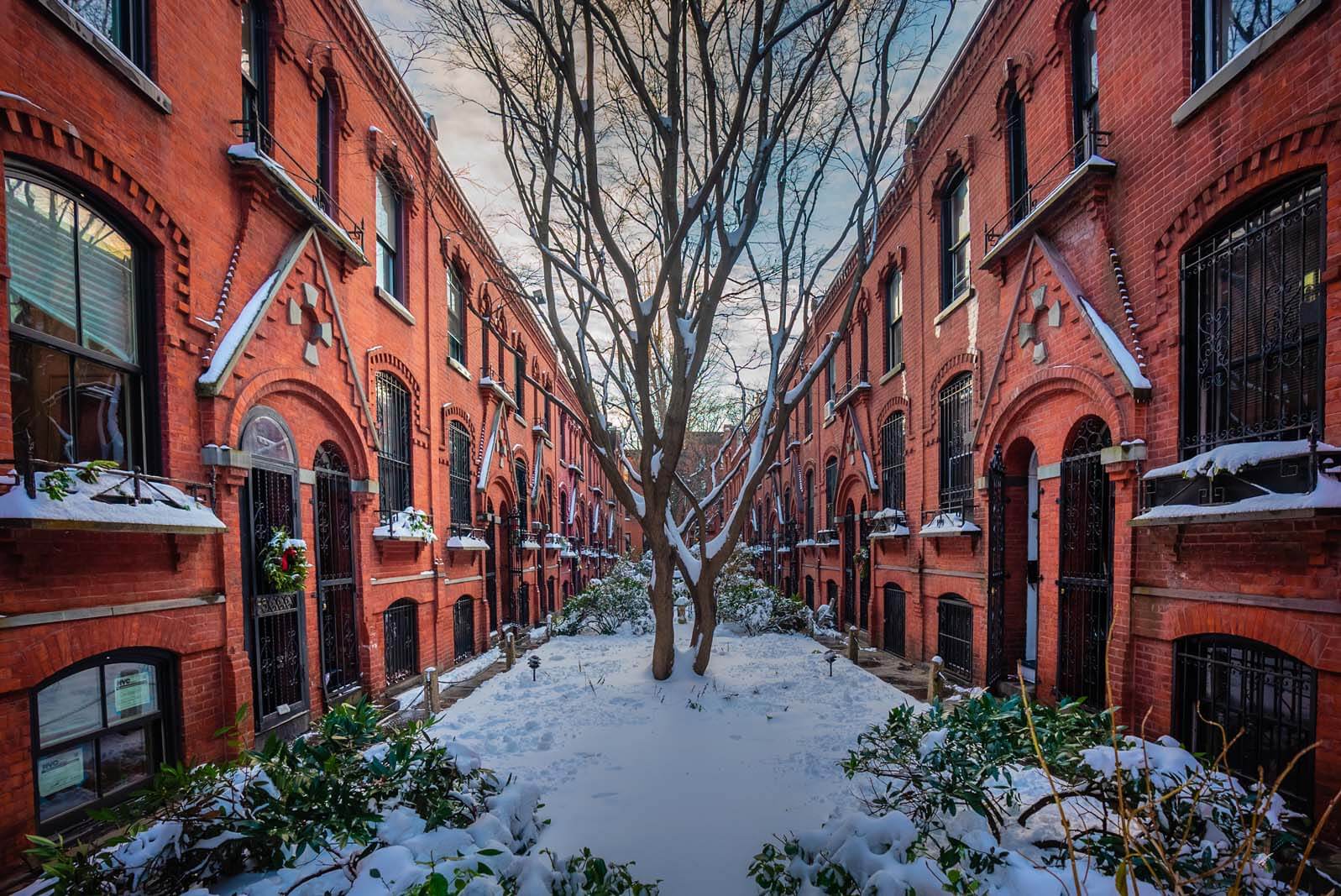
Tucked away in Cobble Hill is one of the coolest architectural hidden gems in NYC and one of the best hidden gems in Brooklyn. It’s hard to believe that these townhouses that are now a hot commodity in the local real estate market (that are rarely ever for sale) were once low-income houses for the working class.
These 19th-century Gothic, brick row houses with a charming little courtyard are probably one of the most picturesque ‘neighborhoods’ or ‘enclaves’ in the city.
Built in 1879 by developer Alfred Tredd White, a famous Brooklyn citizen buried in Green-Wood Cemetery, you can peep down here and see if a gate is open to peek in the courtyard. Chances are the gates may be closed but you’ll still get the view from the photograph above.
If you do visit this secret spot in NYC, please be respectful of the community and residents who live here. Do not make alot of noise and do not intrude or pose on their stairs. We are all about discovering and admiring hidden gems, but not at the expense of upsetting or being invasive of local residents.
Check out the rest of the amazing things to do in Carroll Gardens and BoCoCa in our guide.
Deluxe Green Bo
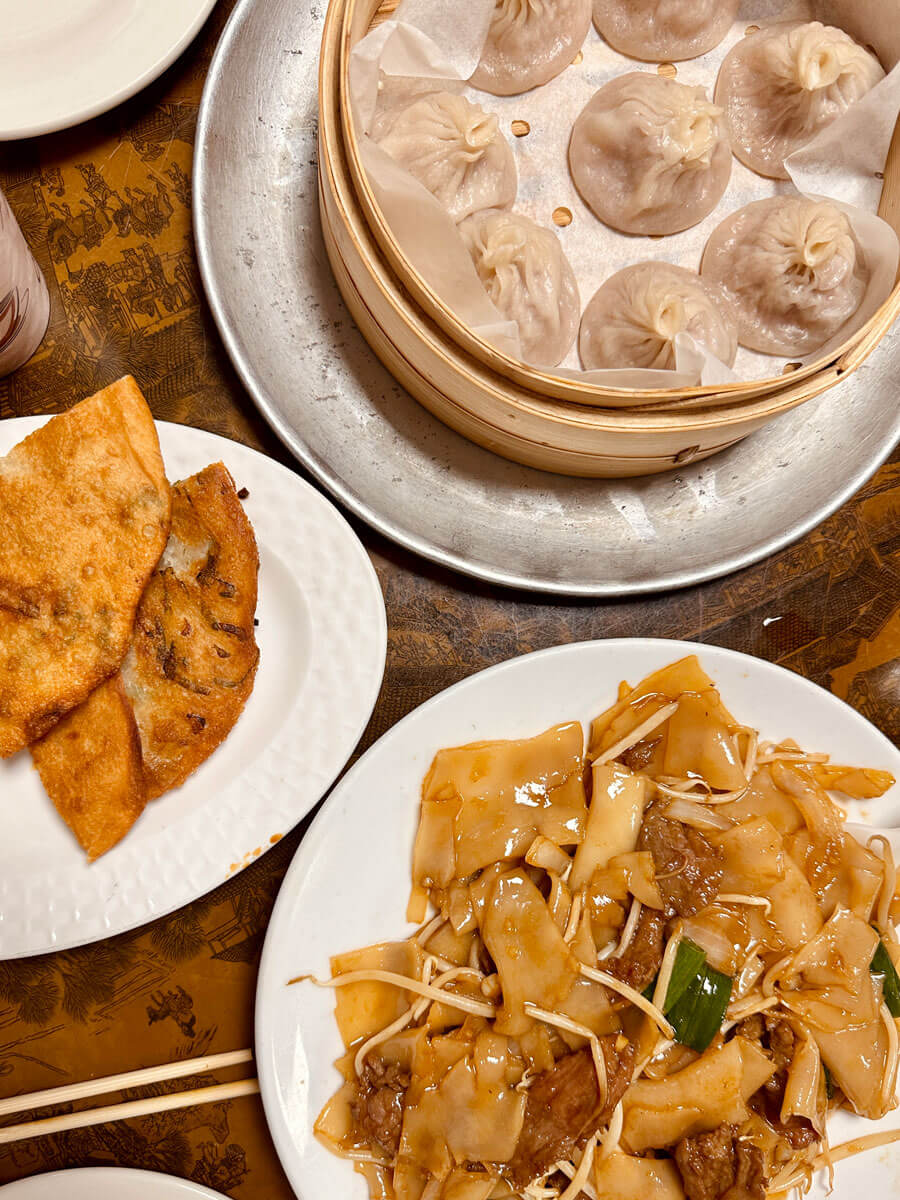
If you are looking for a classic meal in the heart of Chinatown, but without the wait for spots such as Joe’s Shanghai or Wo Hop, visiting Deluxe Green Bo is one of the most unique things to do in NYC–and one of the most affordable.
You may not be the most comfy while eating here–there is next to no effort put into the atmosphere, proof of which lies in the fluorescent lights, tiled ceiling, and largely undecorated whitewashed walls that give it a high school classroom-like feel–but don’t judge it by its looks, because your stomach and your wallet will thank you later.
Be sure to get the soup dumplings and the scallion pancakes, amongst many other delicious options on the menu. The restaurant takes payment in cash or venmo only, so make sure you’ve got one of these two options in advance too.
Inwood Hill Park and the Reported Site of the Sale of Manhattan Island
View this post on Instagram
Perhaps the most monumental event in NYC history happened in Inwood Hill Park at the northwest tip of Manhattan island–the “sale” of Manhattan by the native Lenape tribe to the Dutch colonizers in 1626.
According to legend, Manhattan was “bought” for the equivalent of 24 dollars’ worth of trinkets and glass beads, although the Lenape tribe believed the deal to be for use of the lands, and not outright ownership. At the supposed site of the transaction near 214th Street there is now a boulder with a plaque on its face commemorating the Lenape tribe that once occupied the lands of Inwood Hill Park.
The park is a beautiful landscape of old trees and salt marshes, and is now run by the city parks department as a space for education about the natural landscape of the island as well as its cultural history. Visiting the reported location of this historic interaction is one of the most unique things to do in NYC, and allows visitors to imagine the bustling city in its former, natural state.
Staple Street Skybridge
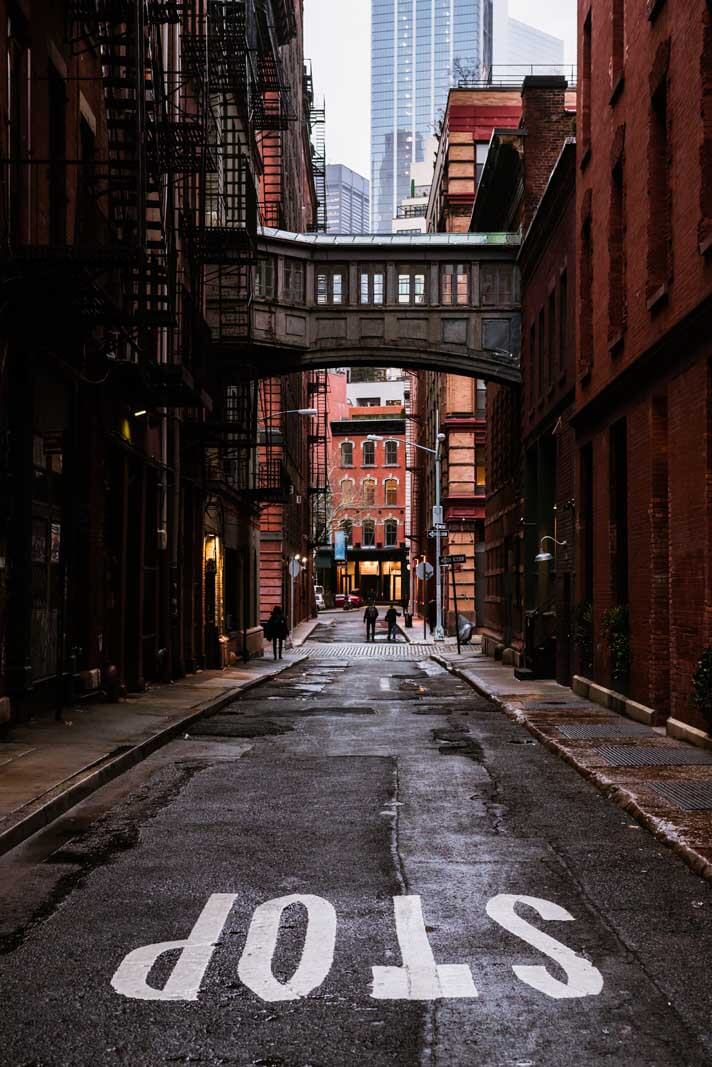
According to an article in Apartment Therapy, more New Yorkers have access to a helipad than a skybridge. This makes the Staple Street skybridge a true hidden gem in NYC, one that will cost you a pretty penny if you wish to purchase it.
Until recently, fashion designer Zoran Ladicorbic resided in the apartment connected to this picturesque overhang, which connects to a three-story townhouse that he used as his studio and office. The entire property must be bought together–the apartment, the townhouse, and the adjoining skybridge–and was listed for about $30 million when Ladicorbic was looking to sell.
When the bridge was originally built in 1907, it served the functional purpose of connecting the New York Hospital to its horse-drawn ambulance carriage house, so that patients could be transported without having to hit the streets. Now, it floats above tiny Staple Street in Tribeca as a remnant of New York around the turn of the century.
Paley Park
View this post on Instagram
Although this tiny, 1/10th of an acre secret spot in NYC is sandwiched in between three buildings in Midtown, its serene landscape and peaceful air give New Yorkers and visitors alike a calming respite from the imposing hum of arguably the busiest section of the city.
Paley Park is what is known as a “vest pocket park”, and built in 1967, is the first of its kind. This hidden gem in NYC was designed by Robert Zion, and features a 20-foot-tall waterfall, ivy-lined walls, a food kiosk, public seating areas, and tasteful greenery that makes it one of the best secret gardens in NYC.
It is a wonderful pit stop if you are visiting nearby St. Patrick’s Cathedral, the Museum of Modern Art, Rockefeller Center, or Radio City Music Hall.
Be sure to check out more secret waterfalls in NYC too!
Hotel St George
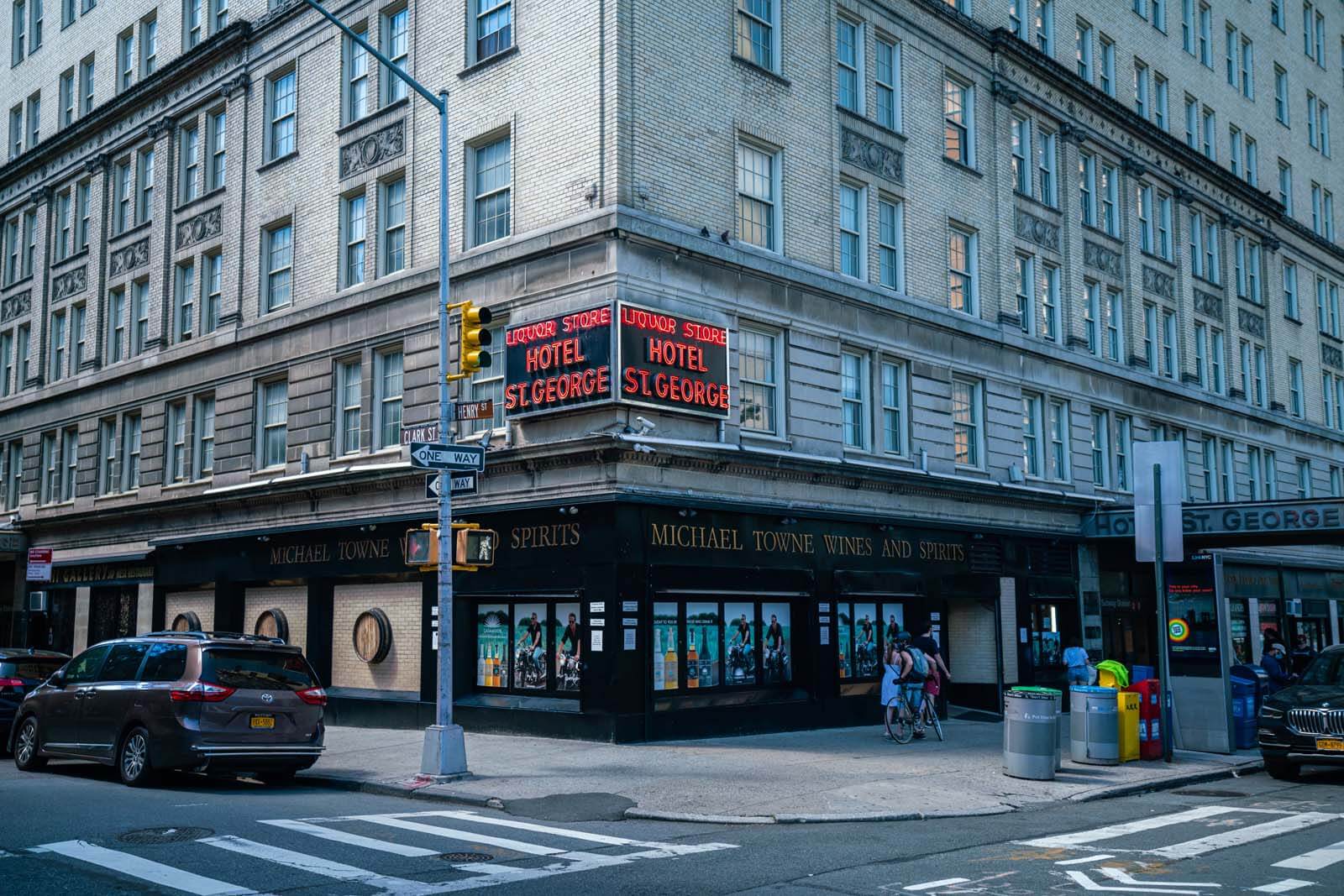
One of the most unique things to do in NYC located in Brooklyn Heights is head to Hotel St. George. This hotel was once the largest hotel in NYC made up of 8 buildings constructed between 1885 and 1929.
This giant hotel also was a popular spot for long-term residents and famous guests like President Roosevelt, President Truman, Duke Ellington to name a few.
Hotel St. George quickly earned a reputation for being open to gay men and by the 1940s through the 1970s and many of its clientele were gay, you can learn more about the LGBTQ history here. This was one of the few hotels outside of Manhattan that were promoted as gay-friendly at the time.
Guests and long stay visitors would grace the halls and visit the famous Egyptian Nightclub or one of the 17 ballrooms in the hotel.
Sadly, much of the original buildings were destroyed in a devastating fire in 1995. The main facade of the building is unchanged though and protected under historic designation. Today, most of the building has been converted to apartments so you can live in the same halls as some of history’s greatest artists, members of the gay community, and even presidents.
This was also a Brooklyn filming location for the Godfather, in the 1972 film the meeting between the two characters Luca Brasi and Virgil Sollozzo took place in the lobby bar here!
Learn more about the best hidden gems in Brooklyn Heights too! This neighborhood is full of them!
Essex Market
View this post on Instagram
Originally opened in 1818 as a covered market consisting of pushcart vendors, Essex Market has fueled the shifting tides of the Lower East Side and has been fueled by its ever-changing demographics over more than two centuries of existence.
Its occupants began as Jewish and Italian immigrants, and today the fully indoor, permanent market encompasses all kinds of cuisines ranging from tropical fruits to German halal to New York City-inspired chicken sandwiches.
In keeping with the traditional history of the market, Essex Market’s website and general atmosphere gives its individual vendors the spotlight, sharing their backstories and inspiration for their creations.
While Chelsea Market on the other side of town has its perks, Essex Market’s brand new space, opened in 2019, is relatively unknown to New Yorkers outside of the Lower East Side, making it a secret spot in NYC sure to offer some of the best food the city has to offer.
Generation Records
View this post on Instagram
Stepping into this musical Thompson Street anachronism is like stepping into a time portal to the past. If you are moseying around Greenwich Village looking to get lost, the infinite number of vinyls, CDs, band t-shirts and posters at Generation Records will provide you this opportunity, whatever your musical tastes are.
The stuffy air of the basement level pairs aptly with the punk music leaking from the speakers, freezing time in its tracks and providing the inspiration to find your very own hidden gem in NYC in one of the old records (a friend of mine found a 1978 Teddy Pendergrass record for four dollars).
It’s entirely possible that your visit here will last for over an hour as you become enveloped by the sheer volume of music, and if you really wanted to spend all day here, it wouldn’t even bring you close to coming into contact with every record available in the store.
If you’re a vinyl fan, be sure to also check out the best record shops in Brooklyn to add more cool spots to check out on your visit!
Stone Street
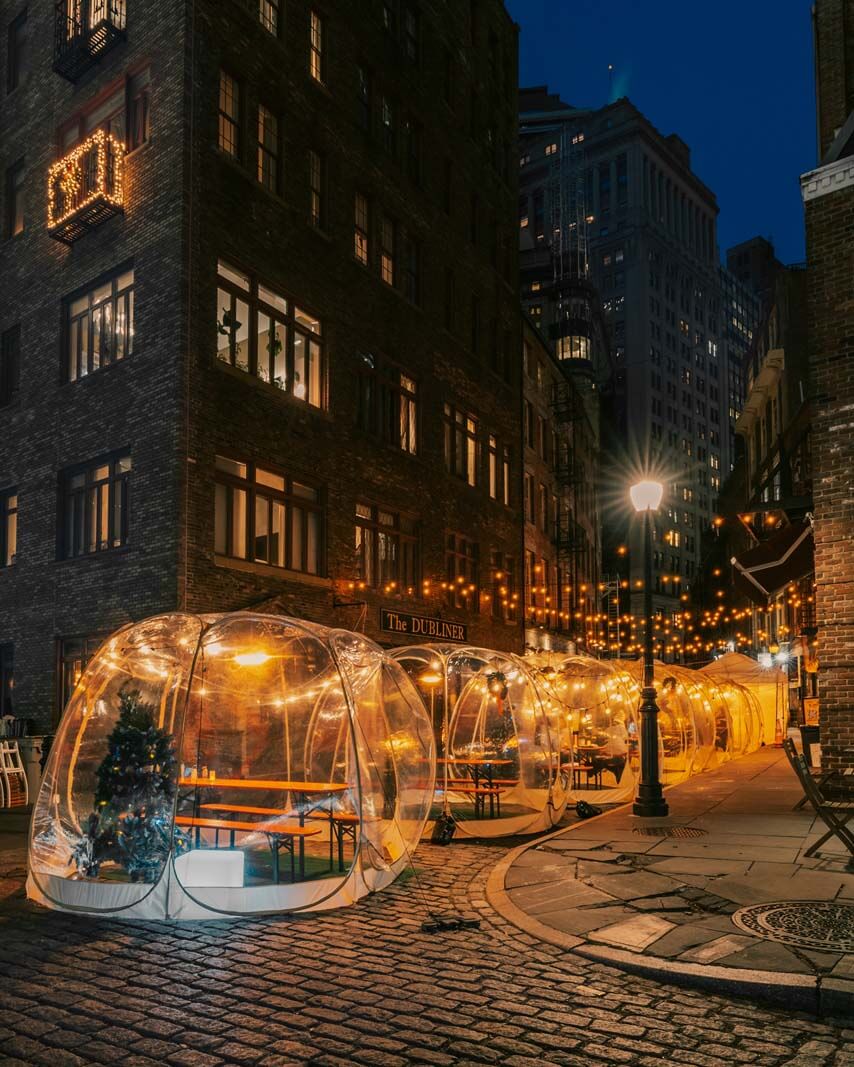
Between the skyscraper lined streets of Lower Manhattan in the Financial District lies Stone Street, a modern-day remnant of the Dutch colony established during the early part of the 17th century.
Stone Street is named for–you guessed it–its cobblestones, which were laid down during Dutch rule and combined to make Stone Street the first paved street in Manhattan history.
Once a thoroughfare for businesses including drygoods (textiles), grocery stores, blacksmiths, and more, many of Stone Street’s buildings were destroyed by the Great Fire of 1835, before being rebuilt in subsequent years in the Dutch neo-renaissance style to reflect the humble origins of this paved hidden gem in NYC.
Stone Street was also home to one of the locations where Alexander Hamilton practiced law too at 69 Stone Street. Today it’s a reloving parking garage though, womp womp.
Since around 2000, bars and restaurants have become the main form of business on the street, and since cars are not permitted, many of them retain expansive outdoor seating for patrons to enjoy and take in the architecture and in the winter there are magical little igloos you can dine in.
Grand Central Whispering Gallery
View this post on Instagram
Located in the dining concourse level of Grand Central Terminal in midtown, the whispering gallery is the premier secret spot in NYC–quite literally.
Taking a friend there and whispering up along the walls to the opposite corner, you can share your darkest secrets without any passersby knowing any better.
The arched dome structure of the gallery was built in 1913 by Rafael Gustavino and his son, Rafael Jr., although it is unclear whether or not they intended for the ceiling to be capable of carrying quiet sounds to the opposite end of the passageway.
Look for the Grand Central Oyster Bar to find the whispering gallery, which stands right in front of its entrance.
Doyers Street–Bloody Angle
View this post on Instagram
Doyers Street–and in particular its sharp turn at what is known as “bloody angle” is recognized as the most violent street in New York history, and sometimes as the most violent street in the country.
Once occupied by Chinese gangs after the turn of the century, this Chinatown spot has a long history of gambling houses, brothels, opium houses, and murder. Today, however, businesses line its sides with little worry over how the street got its nickname.
During the summer months, Doyers street is closed to traffic for the purpose of showcasing its annually painted ground mural, which this year was painted by Chilean-born street artist Dasic Fernández, and is meant to represent the rice terraces present throughout China.
His seemingly 3-D rainbow creation has transformed the small city block, and is set to improve business–in the past, Doyers Street has seen over 100% increases in pedestrian foot traffic.
Giant Boulder
View this post on Instagram
In Morningside Heights on 114th street, there is a gigantic, 100-foot-long, 30-foot-tall boulder that looks like it came from outer space and narrowly missed the two buildings on either side of it, settling in the middle.
In reality, it is just a rare above-ground portion of the bedrock Manhattan sits on, called Manhattan Schist. The passageway between buildings alongside the rock is a lovely shortcut, but the boulder provides more than just a pretty sight–it is a valuable example of New York’s geological history and resulting architectural history.
The reason why most of New York’s biggest skyscrapers are crowded around the neighborhoods of the Financial District and Midtown is because these areas are where Manhattan Schist comes closest to surface level, which prior to the more recent modernizations of architectural technology, meant that they were really the only places buildings of such stature could be built.
For a first-hand look at history and ancient science, and for a laugh at the preposterousness that the boulder owns, it is very much worth seeing this secret spot in NYC.
New York Transit Museum
Another one of the most unique things to do in NYC, that I consider a hidden gem in NYC, is the New York Transit Museum in Downtown Brooklyn. This historic Court Street subway station has been made into a transit museum that shows the history of public transportation from the past to the present day. Spanning a full city block, this secret museum is one of the most interesting educational collections in the city!
At the New York Transit Museum, you can explore the technology and design of NYC’s main mode of transportation. Visitors can climb aboard the 20 different subways and elevated cars that date back to as early as 1907, as well as view exhibits showing the history and future of NYC transit.
The best are the collection of historic trains they have! Take time to walk through them all, the oldest train they have on display dates back to 1904! Even local Brooklynites don’t even realize this impressive museum is right here because the entrance is hidden in plain sight.
Get your tickets here or get the New York Pass which gets you access to 100+ attractions, including this one, for up to 10 days or up to 45% off savings on normal admission prices all with this mobile pass! See our full breakdown of the New York Pass to see what else is included.
Abandoned City Hall Subway Station
View this post on Instagram
Speaking of the New York Transit Museum, this brings us to the next pick for most unique things to do in NYC, and one of the best hidden gems in NYC.
The New York City subway system opened in 1904 at the City Hall station, where passengers could ride for just a nickel. However, just after the end of World War II, the station was closed permanently. The only way to get to it today is on a guided tour by the New York Transit Museum, which offers tours only to members.
However, if you don’t want to pay the $60 fee for an individual membership, you can catch a glimpse of it if you stay on a downtown 6 train past its final stop at Brooklyn Bridge-City Hall.
To reverse course onto its uptown route, the 6 train passes through the abandoned flagship station, and so for the price of a subway ride one can see a beautifully preserved piece of history.
The tiled interior was also designed by whispering gallery architect Rafael Gustavino, and if you visit both places, you can see the similarities present in the design of the tiled arches.
Masstransiscope
View this post on Instagram
One of the coolest hidden gems in NYC on your commute from Brooklyn to Manhattan can be found on the B, D, N, and Q trains departing Dekalb Avenue Station towards Manhattan.
In 1970, artist Bill Brand installed his animated movie in the underground of the NYC subway system for commuters who happen to look up to see his version of a zoetrope, a 19th-century optical illusion that animates images that revolve inside a cylinder so they appear to have movement like a cartoon when viewed through narrow openings or slits.
This installation called Masstransiscope was built in the abandoned and vacant Brooklyn subway station at Myrtle Avenue.
Back then, Brand wasn’t competing with smartphones and other technological devices that are available at our fingertips.
If you want to see this unique thing to do in NYC, be sure to head on the B, D, N, or Q that is Manhattan-bound from Dekalb Avenue Station and hang out on the right hand side windows and watch! You’re in for a treat!
Cool Homes in Victorian Flatbush
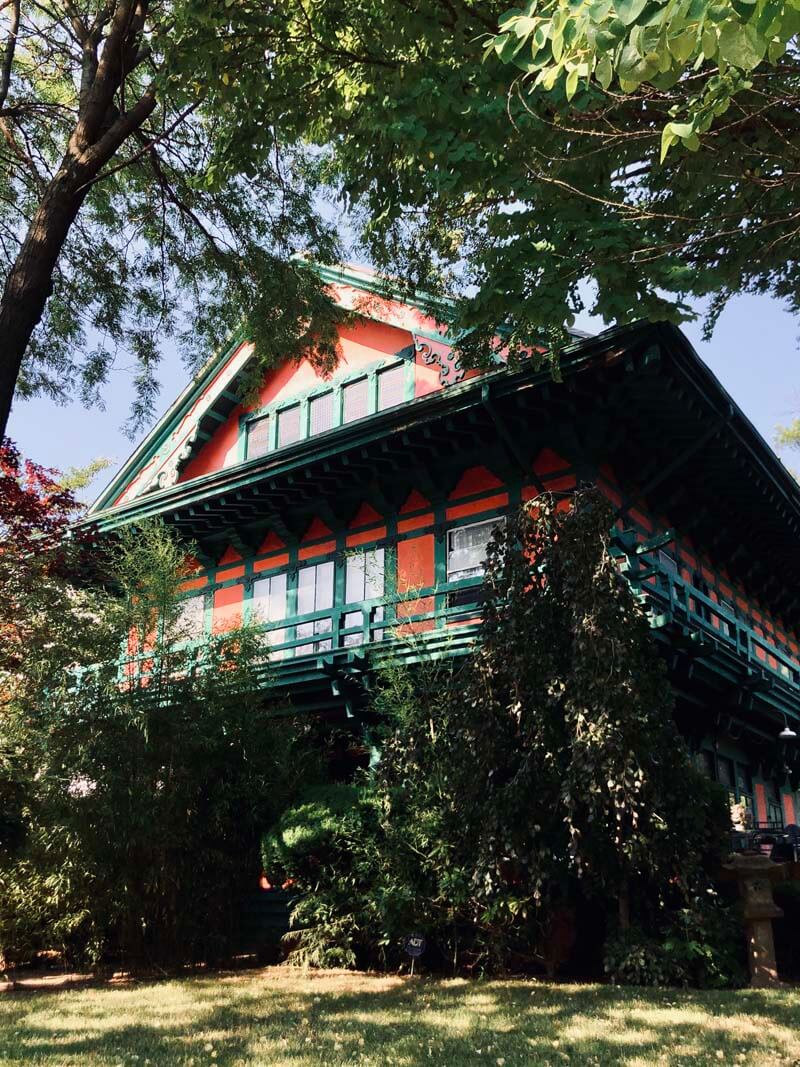
Another fascinating hidden gem in NYC that can be found in Brooklyn is the gorgeous, residential neighborhood of Victorian Flatbush. The neighborhood of Victorian Flatbush aka Ditmas Park is where you can find the world’s highest concentration of Victorian homes in 100 square blocks!
Styles of architecture include Japanese Cottage, Colonial Revival, English Tudor, Greek Revival, Swiss Chalet style, and more.
Walking up and down the historically landmarked (and non-landmarked) streets feels like you’re no longer in NYC. To get the full experience, be sure to visit our explorer’s guide to Victorian Flatbush and you’ll be sure to see why this is one of our favorite scenic walks in Brooklyn.
Albertine
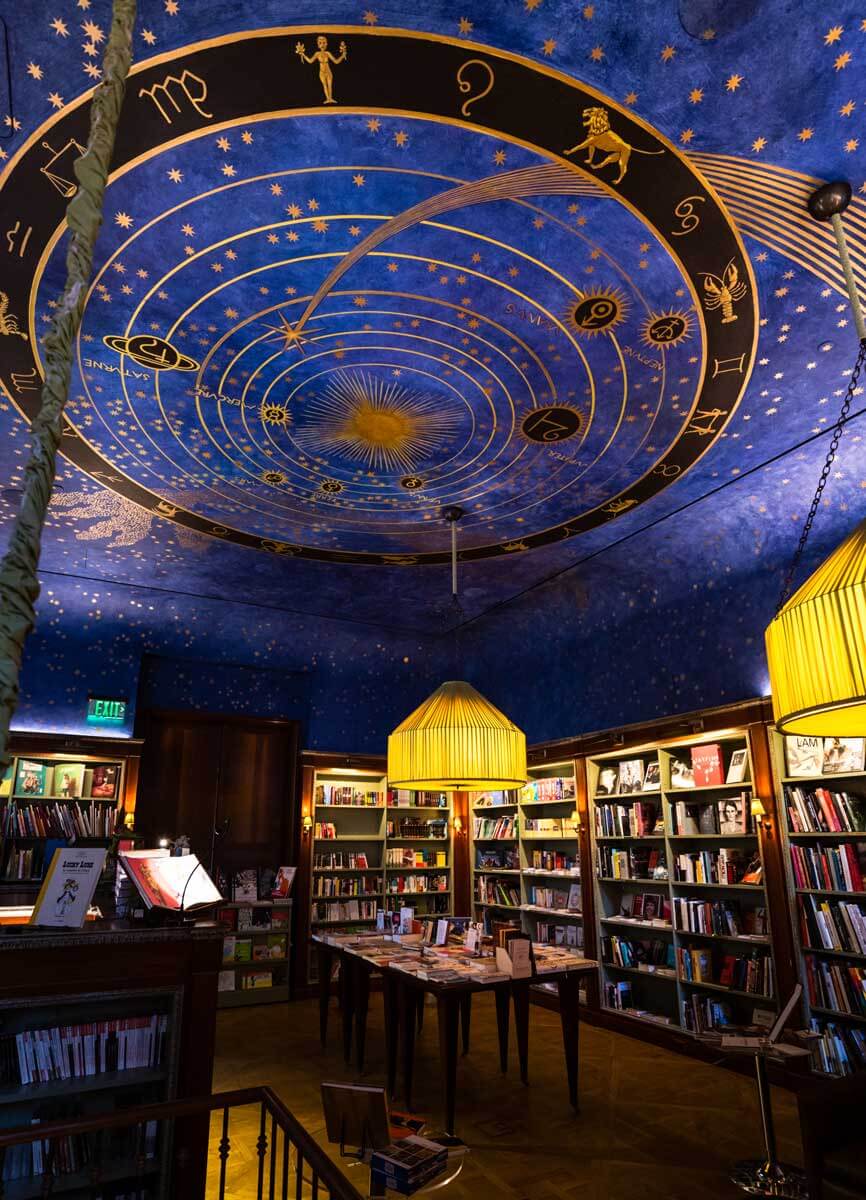
For book lovers, this is one of the best unique things to in NYC and best NYC hidden gems for you! Adjacent to the French Embassy in New York on the Upper East Side, Albertine one of the most beautiful NYC bookstores with the city’s French literature collection – there are over 14,000 classic and contemporary titles available in French and English.
In addition to their impressive inventory, Albertine boasts a truly stunning interior – housed on the Upper East Side within the Payne Whitney mansion, it was designed in 1902 by famous New York architect Stanford White (who was also behind the Washington Square Arch, and if you’re really in for the deep-dive, sordidly involved in The Crime of the Century).
The interior is now composed of warm, wood-paneled walls and shelves, plush leather couches, and a touch of celestial and astrological whimsy in its hand-painted mural of constellations, stars, and planets modeled after the ceiling of a music room in a German villa.
Paley Park
View this post on Instagram
Did you know there are secret waterfalls in NYC? One of the most unique things to do in NYC if you’re looking for a little ‘zen’ is find one of the best secret parks in the city.
Located in an outdoor area with a magical hidden NYC waterfall wall that hides the sounds of the city, trees, and plenty of places to sit, Paley Park is one of our top picks for hidden parks in NYC because it truly is a hidden gem! Paley Park has become one of Manhattan’s jewels and hidden gems in NYC, a marvel of urbanity and grace. You’ll love the serenity of the space and the fact that it is just minutes from some of New York City’s biggest attractions, such as Radio City Music Hall.
[line]
If you love secret spots like we do check out the best hidden gems in Central Park too!
